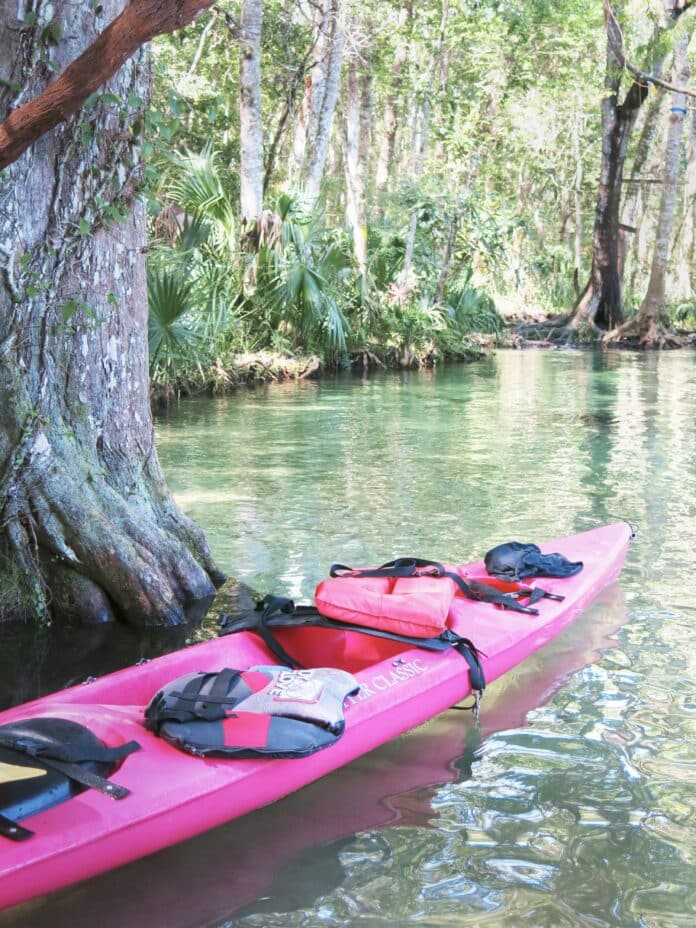Hernando County Utilities Director Gordon Onderdonk asked Board of County Commissioners on July 24, 2018 for approval to withdraw current funding applications for proposed septic-to-sewer conversions. The current applications total approximately $50-million, co-funded with Southwest Florida Water Management District (SWFWMD) and the Florida Department of Environmental Protection (DEP), however also required a $4200 portion funded by each respective property owner, or other county funding. The board approved unanimously.
Onderdonk reviewed data showing that 30% of nitrogen introduced into the Weeki Wachee spring comes directly from septic systems. Part of the Basin Management Action Plan (BMAP) includes a twenty year plan to reduce the amount of nitrogen, which is measured in pounds-per-year (lb-N/yr). The initial reduction goal is 58,560 lb-N/yr within the first five years, and 195,200 lb-N/yr total within 20 years.
One state-funded application will remain in place; the decommissioning of the Spring Hill Wastewater Facility will bring the county very close to its five-year goal, by eliminating an estimated 46,171 lb-N/yr. “Bang for the buck, it’s like four times better than to do the septic-to-sewer conversion,” Onderdonk said.
At the BOCC workshop on June 5, 2018, the Board expressed a consensus not to pursue the additional funding by instituting an Municipal Service Benefit Unit (MSBU) on homeowners. Onderdonk expressed optimism that the decommissioning of the wastewater facility, in addition to other funding applications, including a $10,000,000 application for Airport Water Reclamation Facility Expansion will have the same effect on nitrogen reduction.
The expected timeframe for the decommissioning of the Spring Hill wastewater facility is five years.
The BMAP area consists of 200,474 acres located in southern Hernando County, including a portion of the City of Brooksville, and northern Pasco County. The BMAP area contains the Weeki Wachee Spring Group which is composed of a single, large main spring and numerous smaller springs spread over an area of nearly five square miles. Weeki Wachee Spring is the primary source of the Weeki Wachee River and the largest spring in the group. The BMAP area also contains Magnolia-Aripeka Springs Group; Mud Spring, Salt Spring, Wilderness Spring and Jenkins Creek Spring.
Residents should be aware that July 1, 2018 signaled the enactment of new regulations on septic systems within “Priority Focus Areas” of “Outstanding Springs.” In correspondence from The Florida Department of Health, which is the permitting authority for “On Site Sewage Treatment and Disposal Systems” (aka septic tanks), the new regulations are outlined.
“DEP is mandated by statute to develop the OSTDS remediation plans by July 1, 2018. Under these plans, an area resident applying for a new construction permit in the PFAs on lots with a size of less than one acre has the following options:
• connect to available sewers or,
• install a conventional non-nitrogen-reducing OSTDS if the utility has identified the property as being within a BMAP-listed septic-to-sewer project or,
• install a nitrogen-reducing OSTDS such as, “In-ground, passive nitrogen-reducing systems” that use additional soil and media layers to reduce nitrogen flow into the aquifer, or nitrogenreducing Aerobic Treatment Units (ATUs) and Performance-Based Treatment Systems (PBTS)… ”
To determine if your lot is within a Priority Focus Area (PFA) go to: https://floridadep.gov/PFAmap.
The DOH letter continues:
“New OSTDS permitted on July 1, 2018 or later, that will be constructed on lots less than one acre, located in a PFA, will be required to have a nitrogen-reducing OSTDS. Conditions that would invoke “New” OSTDS construction in Chapter 64E-6, Florida Administrative Code are:
• Installation of a system where a system has never been installed.
• Installation of a system where the previous system was abandoned when use of the property was discontinued.
• Installation of a system when the previous DEP-regulated treatment facility is being decommissioned.
• Installation of a system to serve a house addition rather than modifying the existing system.
• Installation of a system to serve an additional structure on the property.
• Installation of a complete system to replace a system where the existing structure is being expanded into the location of the existing system, or where the placement of a pool, outbuilding or other structure is impacting the location of the existing system.
• An increase in the existing domestic sewage flow of over 20% at a non-residential establishment.
• Any increase in commercial sewage flow (e.g., restaurant, nail salon, commercial laundromat).”
DOH explains that the owners of existing septic systems are encouraged to get an upgrade, but will not be required until “indicated in DEP’s remediation plan and the system is in need of repair or modification.”
Grant programs are underway for homeowners in order to replace existing systems.
The letter states, “DEP will administer the grant program to help homeowners cover the difference in costs for upgrading their existing septic system to enhanced nitrogen treatment systems to nutrient impacts to springs.”

